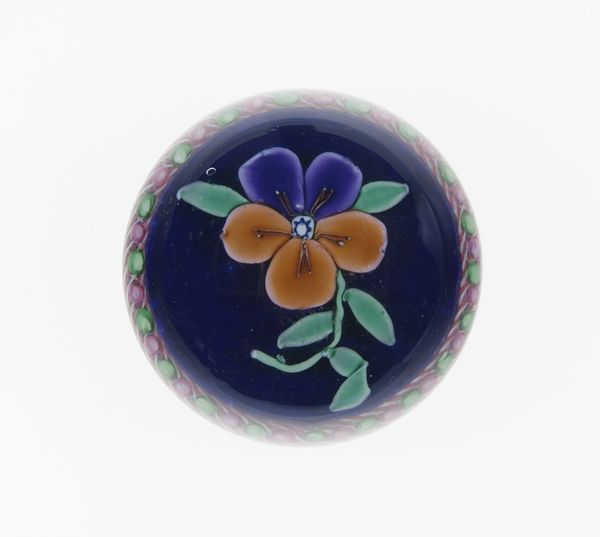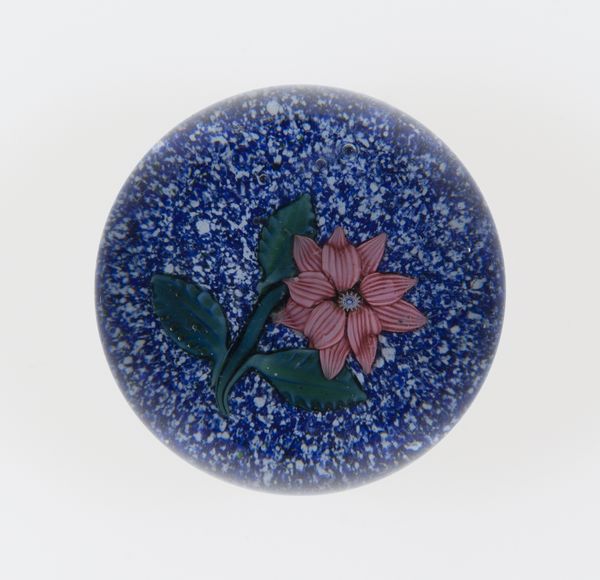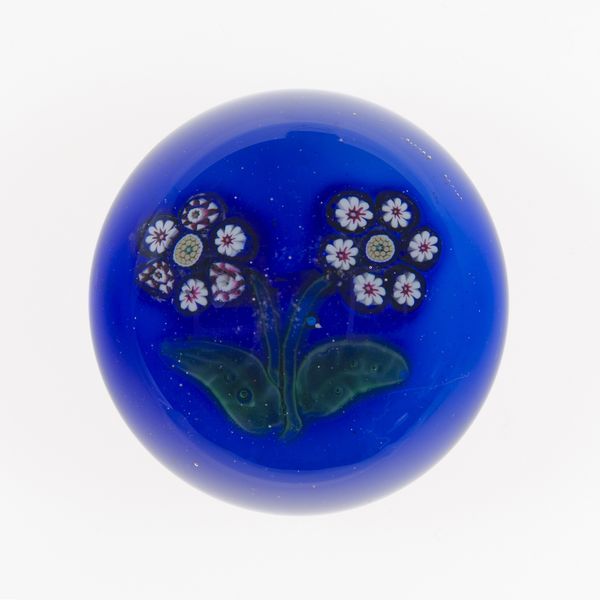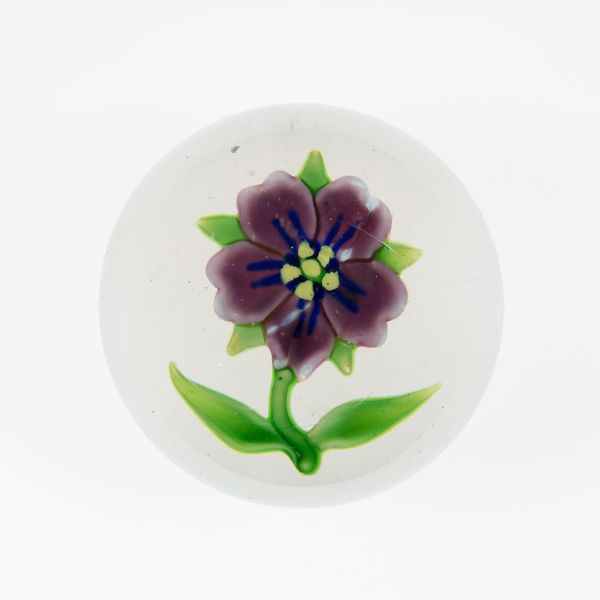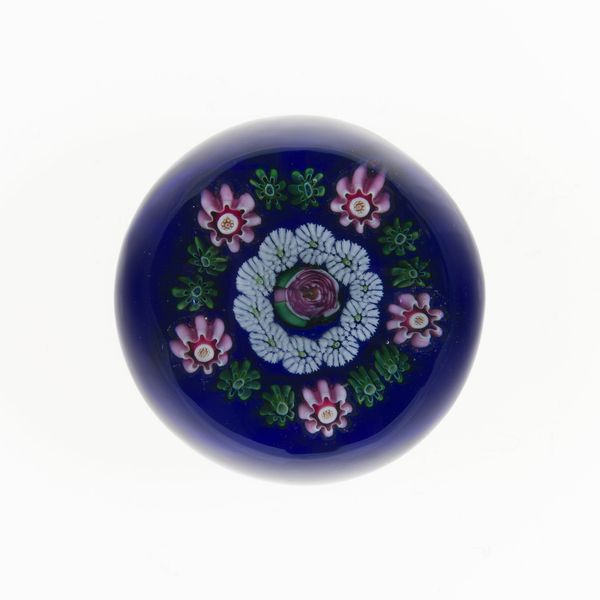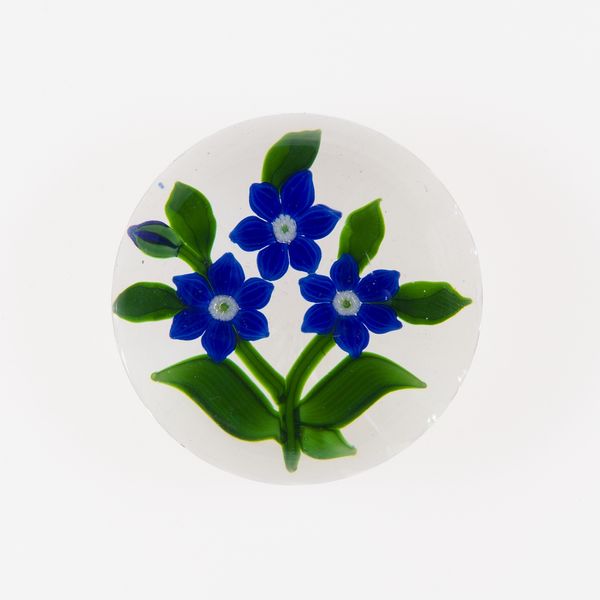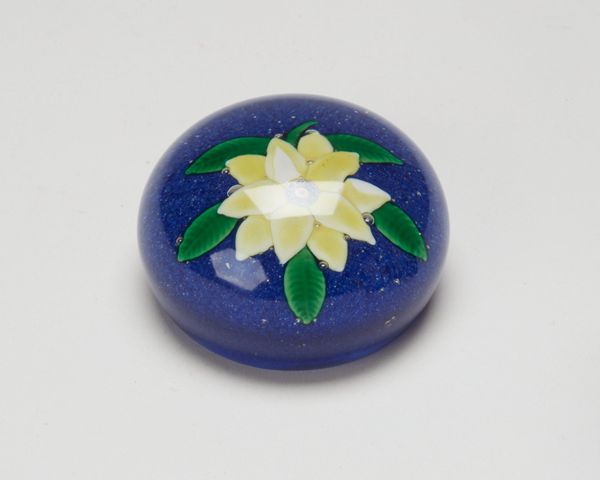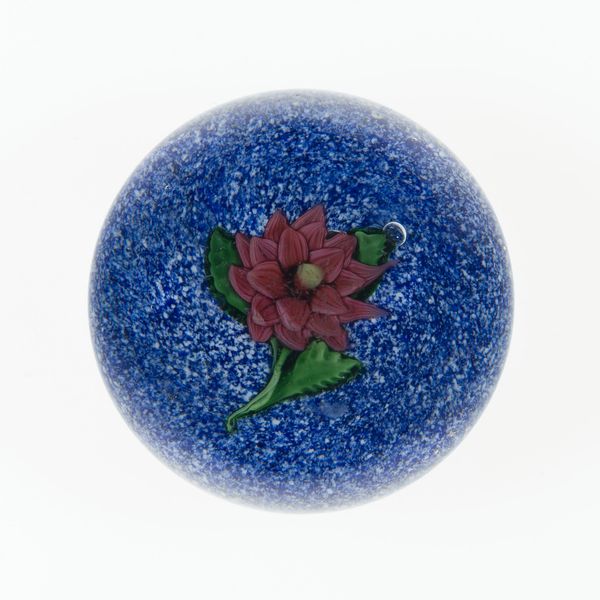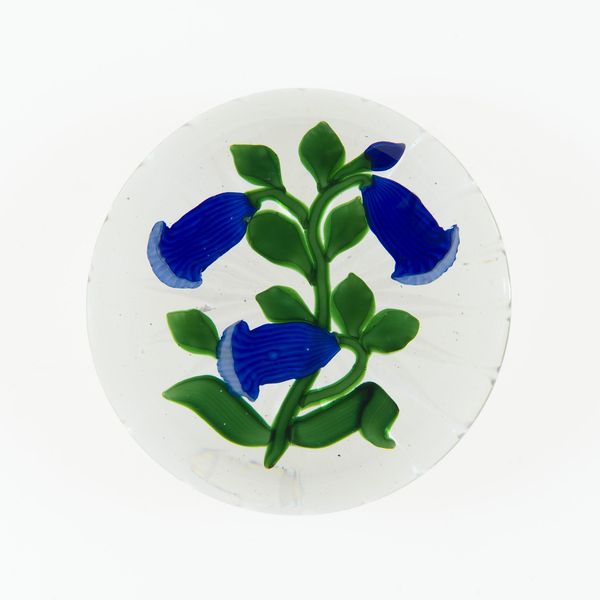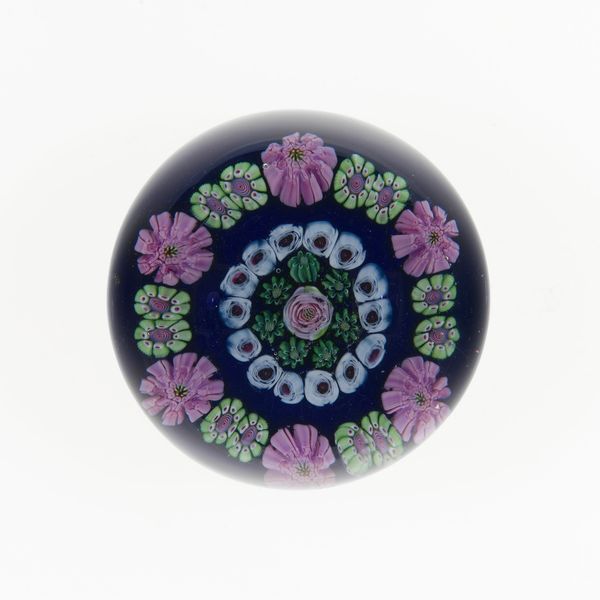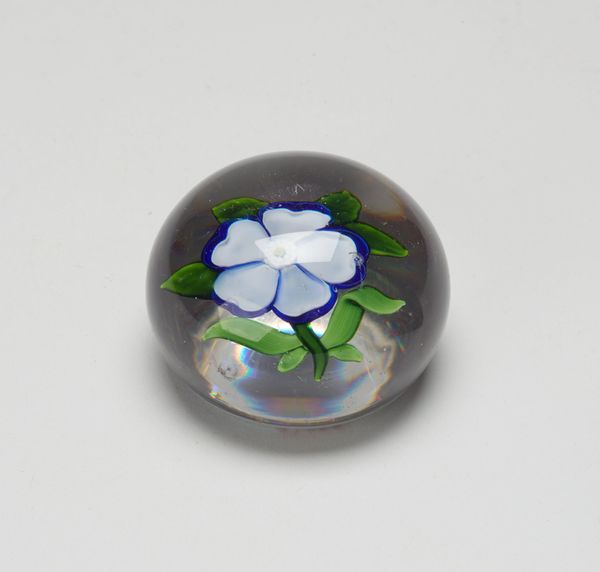
Dimensions: Diam. 7.9 cm (3 1/8 in.)
Copyright: Public Domain
Curator: Well, hello there! This little jewel is a paperweight, made sometime between 1845 and 1860 by the Clichy Glasshouse. Look at the flowers frozen in glass! Editor: It's…captivating. That deep cobalt blue, almost swallowing the delicate floral arrangement. There's a kind of melancholy beauty to it. A world preserved, but also contained, limited. Curator: Indeed. Clichy was renowned for its millefiori technique. See those tiny, intricate glass canes fused together to form the bouquet? It’s like holding a secret garden in your palm. The way light refracts through each layer… Editor: Yes, the refraction creates an interesting distortion. It flattens the image, abstracting the bouquet, but it also adds depth, pulling you into its illusory space. There's tension between surface and depth, between representation and abstraction. It’s not simply mimetic, it's transformational. Curator: Absolutely! These weren't just desk accessories; they were whimsical art objects, little celebrations of nature trapped for eternity. Each bloom tells a story. Imagine the artisan meticulously arranging each sliver of colored glass. It makes me feel a profound respect for their creative vision, doesn’t it you? Editor: Without question, but I'd suggest that beyond mere respect we see ingenuity in using the curvature of the glass itself as a structural and optical component. Look closely and you will perceive how it integrates the flowers with the field of blue surrounding it by controlling the beholder’s eye. It's far from naive, the whole thing rests on design decisions which add an underlying tension between material, composition, and ultimately our own perception of it as observers. Curator: Very well said! Next time you’re shuffling papers at your desk, imagine having this little wonder under your hand. Talk about elevating the mundane! Editor: And it’s funny to consider something so carefully composed having such a humble purpose – holding down paper. This tiny decorative objet, really challenges our traditional hierarchy separating decorative and so called high art. Something so delicate…and yet so resilient. I like that contradiction a lot.
Comments
No comments
Be the first to comment and join the conversation on the ultimate creative platform.

